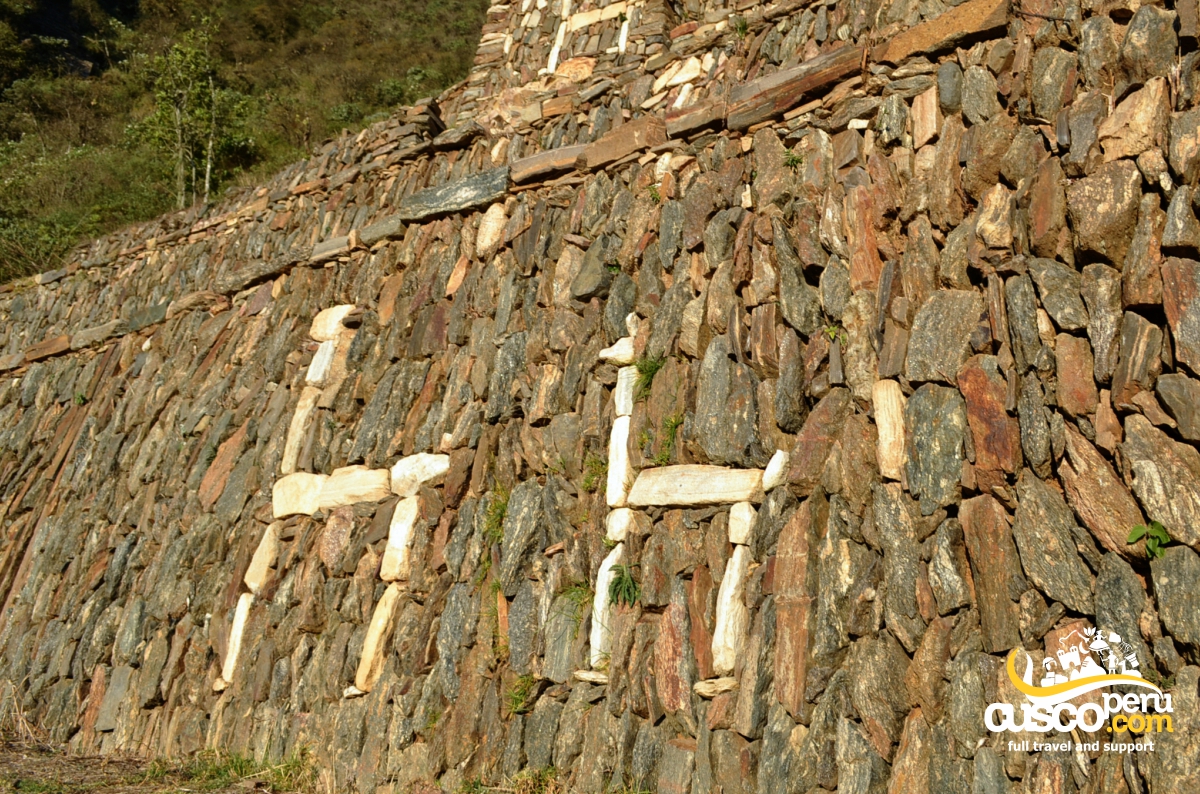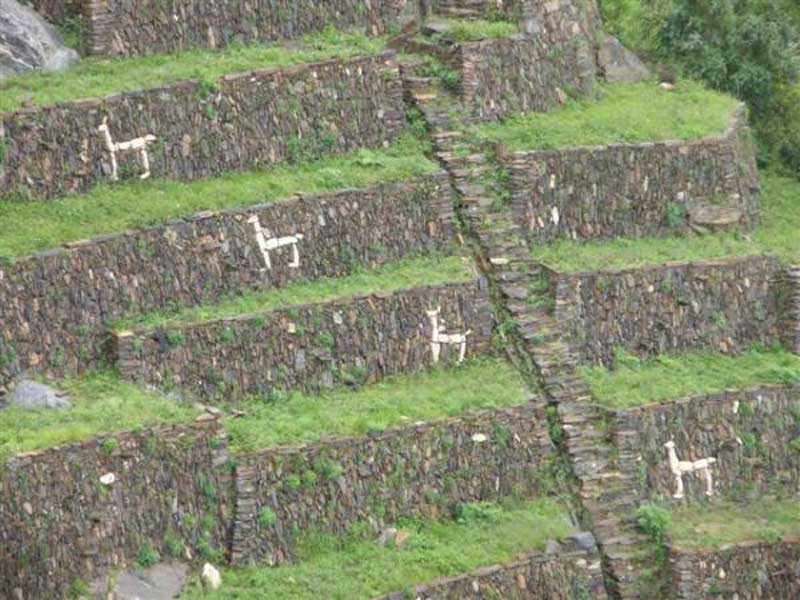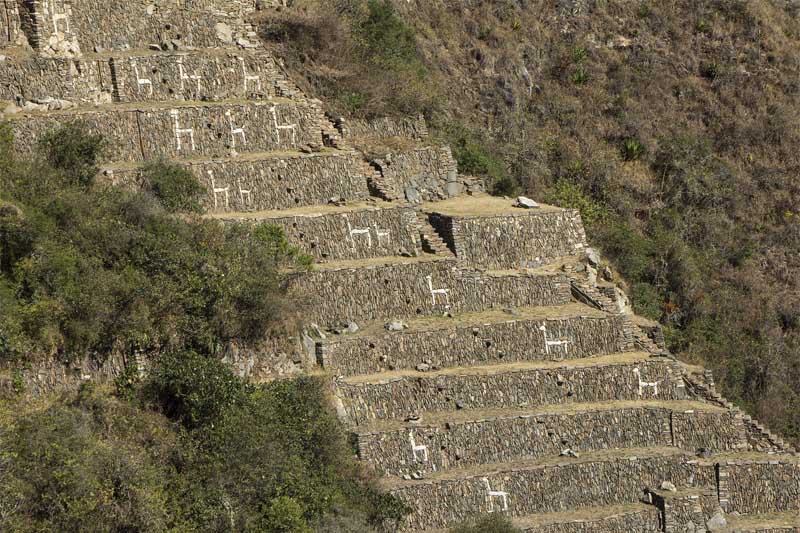In 2004 in a remote mountain site on the Eastern side of the Andes, bordering on the Amazon, archaeologists uncovered an overgrown settlement 1500 metres above the river Apurimac and 3100 metres above sea level.
The environment here is so-called Amazonian Quechua or Amazonian Andes, high in the mountains but easterly enough to have the heavy rainfall and sweaty temperatures that support Amazonian trees, flowers, birds and mammals.

On an elevated spur of a mountain range directly above the Apurimac, an area was levelled to build a group of ritual buildings, not unlike Machu Picchu. The site is remote. Backpackers reach it by trekking on a four or five day round trip. The high saddle is on a steep hillside, over 3000 metres above sea level, below the artificially flattened hilltop of Sancha Pata.
Choquequirao was most probably a public ceremonial centre, with plazas, store rooms, water channels, areas dedicated to the sun and other deities, agricultural terraces and housing for administrators and artisans. The buildings here are mostly made from a dark schist, quarried from rocky outcrops on the nearby hillsides. But when the archaeologists cleared a series of agricultural terraces, andenes, they also found mixed in with them stones of a lighter stone, calcium quartzite. The stones outlined the shapes of llamas in white against the dark schist.

The images are simple and rectilinear – two legs in profile, a flat back, a neck and a head. They also have ears and hooves, and some appear to be carrying loads, or have a head-dress. The position of the hooves gives an impression of movement, and the angle of the ears and the shape of the head offers some character.
As the terraces were cleared a complete picture emerged that can only be seen fully from an adjacent hillside. There are two packs of llamas marching uphill and east, towards the central plaza of the Choquequirao settlement. One pack consists of ten animals, another above it has fourteen, two of them youngsters closely following adults. Standing below, driving them from behind is a very simple drawn stick-figure man on the walls of the lowest terrace.

It appears that the original settlement was built during the rule of Inca Pachacutec from 1438 to 1471 , and then remodelled by Inca Tupac Yupanqui from 1471 to 1493. The terraces of the llama trains appear to have been created with that second phase of development.
For the dominant Inca state, llamas were doubly important. The state system of the Inca involved central planning of the products of the empire, and storage and re-distribution throughout its 2000 km long extent from Ecuador to Chile.
All this manufacturing, storage, and re-distribution was the logistical equivalent of running a chain of supermarkets across the length of South America, and in place of fleets of lorries the Incas had their own dedicated llama trains and herders, walking the spine of the Andes, along the coastal roads, and up and down the valley tracks that linked them.
The Choquequirao mosaic could simply represent a line of llamas climbing the hillside, but there are some interesting interpretations that link them to surrounding mountains, stars in the sky and seasons of the year.
**********************************************************
